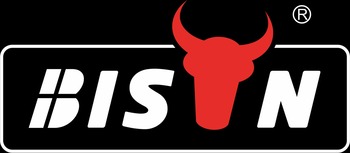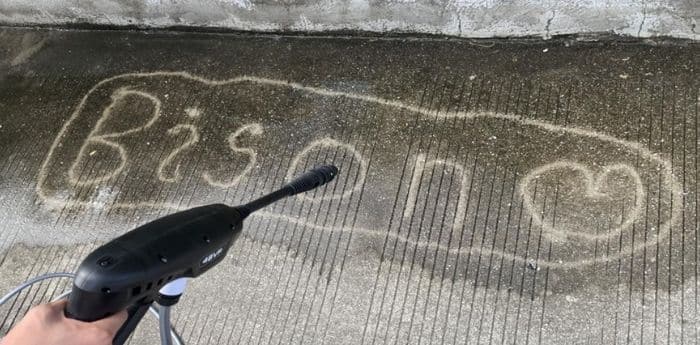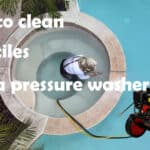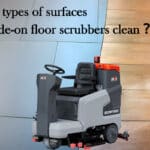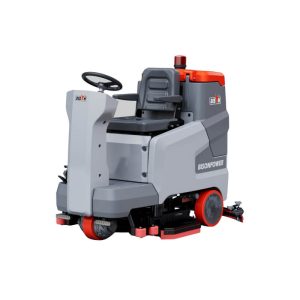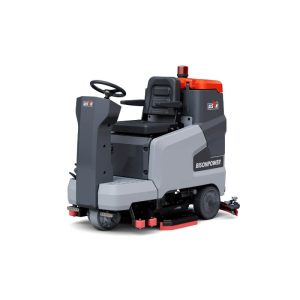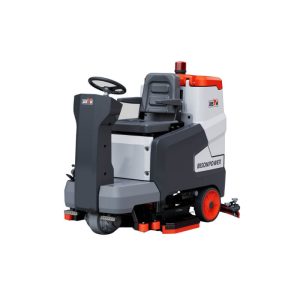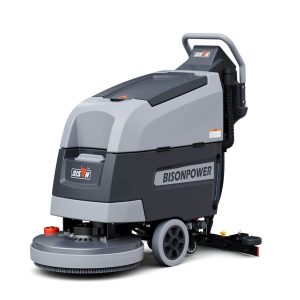
BISON Santy
Hello, I am Santy, the funder of bisonclean.com. I have been in cleaning machinery field for more than 5 years now, and the purpose of this article is to share with you the knowledge related to pressure washer from a Chinese supplier's perspective.
Table of Contents
Floor scrubbers are important cleaning tools that are relied upon every day for many cleaning tasks and play a vital role in maintaining a clean, safe and professional environment. Purchasing a floor scrubber is also a significant investment, however, if these machines are not properly maintained, cleaning teams may face downtime, reduced efficiency, frequent replacement of parts and other problems.
A well-maintained floor scrubber delivers superior cleaning results, operates more efficiently, and significantly extends the machine’s service life. This article explains how to maintain a floor scrubber, including daily, weekly, and monthly maintenance procedures, common problems, and troubleshooting. By following the maintenance strategies outlined in this article, your floor scrubber will continue to provide optimal performance and value for years to come.

Regular maintenance tasks for floor scrubbers
Each machine’s manual will contain specific guidelines for the maintenance and operation of the floor cleaning machine. BISON recommends that you should familiarize yourself with the user manual first.
1. Daily maintenance procedures
It is important to check the condition of the floor scrubber on the day of use and to maintain it promptly after operation.
Check before using the floor scrubber.
- Check the battery terminals for corrosion and make sure the battery is fully charged.
- Check the solution and recovery tanks for leaks or cracks, and make sure the solution tank is filled with water and the recovery tank is empty. (Make sure you fill your solution tank with clean water (60° max), and only use cleaning agents that are approved for industrial scrubbing.)
- Check the wear of squeegees, brushes, and scrubbing head skirts to make sure they are in good condition.
Inspection after using a floor scrubber
- Rinse the solution and recovery tanks promptly to prevent accumulation and odor.
- Clean or replace the wear of squeegee and brushes, making sure they are free of debris and can scrub effectively. If one side of the scraper is worn, just turn it over, but if both sides are worn, replace it with a new one.
- Wipe the outside of the machine to remove any dirt, chemicals, or residue that may affect its appearance and function.
- Plug it into the charger after each use. To maximize the life of your floor cleaning equipment. Proper charging is one of the best actions you can take
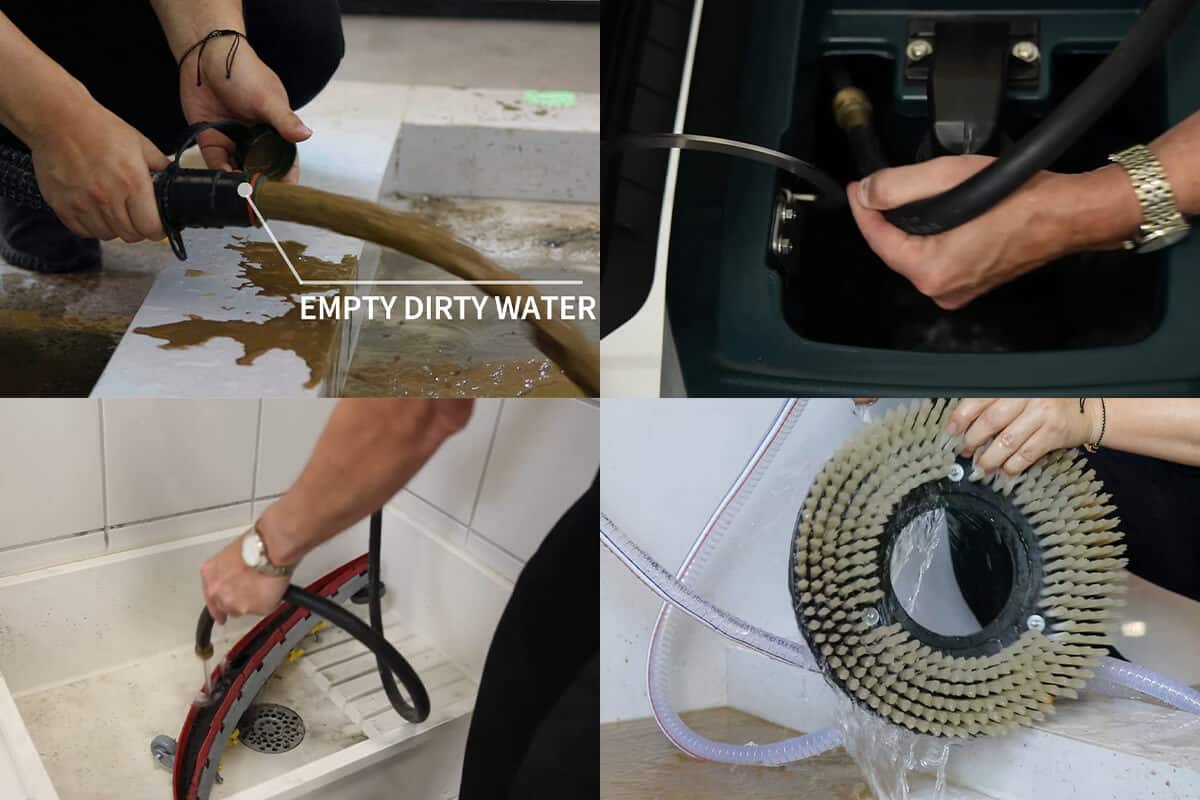
2.Weekly maintenance tasks
Weekly maintenance includes less frequent but critical inspections that improve the performance of the machine. Thoroughly disinfect both water tanks weekly to eliminate bacteria and ensure sanitary conditions. The vacuum system is an important part of the floor scrubber and should be checked for blockages and to ensure that the vacuum system is operating effectively. Clean the filter and check the hose for wear. Finally, don’t forget to remove the rubber scraper for a deep clean to remove accumulated dirt and debris, which will ensure the cleanliness of the floor.
3. Monthly floor scrubber maintenance
Battery maintenance: For all batteries, you will need to inspect the battery terminals to ensure there is no damage or corrosion to the cables and check for any loose connections. Check the electrolyte level in wet batteries and refill with distilled water. A baking soda and water solution is a great way to clean the top of your batteries to prevent corrosion, but do so carefully so the solution doesn’t get into the battery cells.
Clean solution system: Add 3 gallons of warm water and an approved alkaline cleaner to the solution tank. Run the machine for 45 seconds using the solution control. After flushing, shut the machine off and let it sit overnight before flushing the tank again.
Parts replacement: Inspect and replace any worn components such as brushes, pads, and seals to avoid performance issues and improve cleaning efficiency.
4.Quarterly maintenance tasks
- Operational preparation: Before the season changeover, inspect the machine for any issues that may arise from temperature changes or different cleaning needs.
- Storage preparation: If the machines are not used seasonally, make sure to clean them, charge the batteries, and use protective covers to prevent dust and moisture buildup.
- Full system inspection: Perform a detailed inspection of all major components, including brush skirts, motors, belts, and wiring. Remove any wires, tape, plastic packaging, or other debris wrapped around brushes and motor shafts. Look for signs of wear, electrical problems, or mechanical failure.
- Fluid Inspection: Check and replace hydraulic fluids or lubricants per manufacturer’s guidelines.
- Stock replacement parts: Assess spare parts inventory and order replacements for any parts that are nearing the end of their lifecycle.
- Training Program: Train employees on maintenance procedures and best operating practices to improve efficiency and avoid floor scrubber failures caused by incorrect operations.
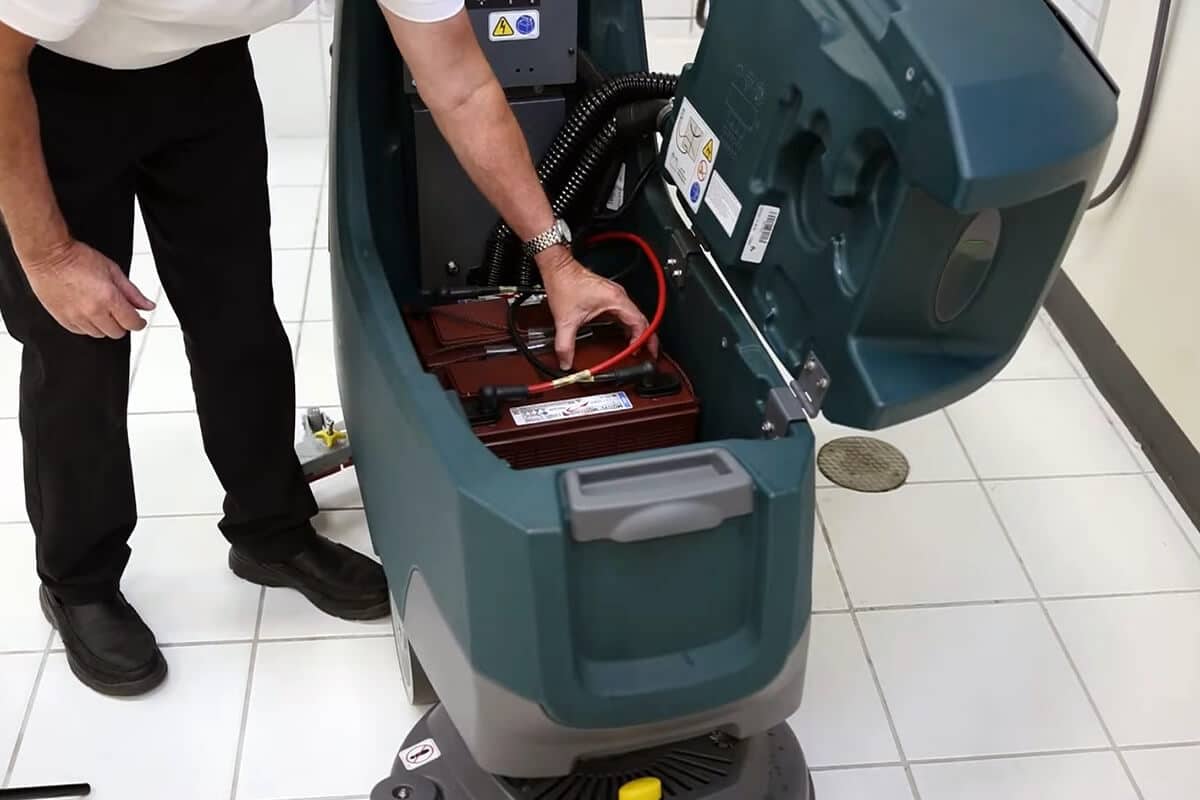
Common problems and troubleshooting of floor scrubbers
Mechanical problems:
- Reduced suction or water flow: Check hose for blockages or bends. Clear blockages using compressed air or manually remove debris. Or check and replace any worn seals to maintain suction.
- Unusual noise, overheating or complete failure to start: Check electrical connections and fuses. If the motor is damaged, consult a technician for repair or replacement.
- Poor or uneven scrubbing: The brush or scraper is probably worn. Check the condition and adjust or replace it.
- Difficult to maneuver or ride unsteadily: Check wheels for wear and proper alignment. Lubricate bearings and replace damaged wheels. Lubricate any wheel housings and chains and bearings with lubricant and replace any damaged wheels.
Electrical problems
- Fast power consumption and warning lights on: Indicates battery failure, test battery voltage and electrolyte level. Clean terminals and connections, and replace batteries if necessary.
- Failure of control, unexpected shutdown: Circuit board failure should check if the connection is burnt or components are damaged. Reset the system according to the manual.
- Battery is not charged or overcharged: Test charger and connections. This is a charging system failure. If it is a charger problem, please replace it.
Conclusion
Only regular maintenance can keep your floor cleaner running efficiently and extend its life. By following daily, weekly, and monthly maintenance tips, you can prevent downtime, reduce repair costs, and keep your equipment in top condition. By integrating these practices into your routine, you can enjoy the numerous advantages of a well-maintained cleaning machine.
As you consider your floor cleaning solutions, look no further than BISON, China’s leading floor scrubber supplier. With BISON’s excellent reputation, you can focus on sales without worrying about after-sales issues because you know you are providing quality products. Not only is the quality outstanding, but the BISON floor scrubber can easily pass up and down slopes and is even powerful enough to pull up a small car. It is undoubtedly the most suitable cleaning tool for cleaning floors and the best choice for dealers.
FAQs About Floor Scrubber Maintenance
The first step is to spray some dish soap onto the brush and rinse it with warm water. Use your fingers to massage the dish soap into all the bristles so that the brush is smooth and sharp. Then, rinse it well in the sink or tub.
In our expectation, the BISON floor scrubber can operate reliably and efficiently for 5 to 15 years. Frequency of use, maintenance, quality and model, and operating environment will all affect the service life of the floor scrubber. However, proper maintenance and correct use are the key to maximize the service life of the floor scrubber.
You might also enjoy
Questions?
Contact Us Today.
Related Products
Find more?
Related Posts
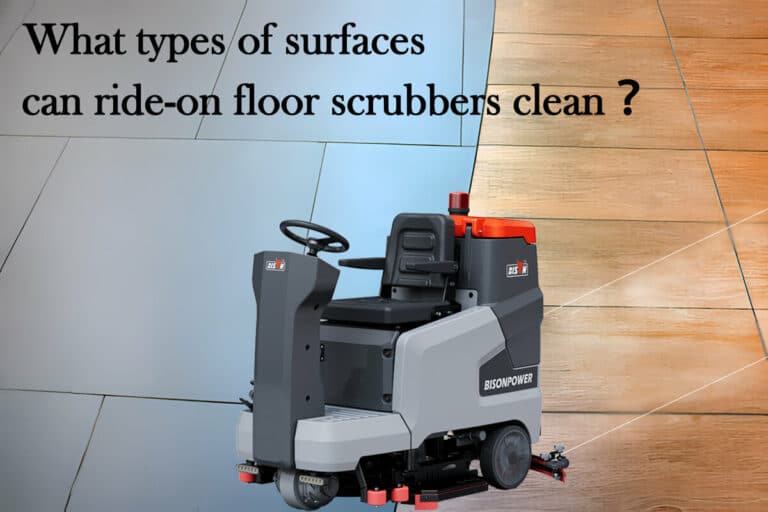
What types of surfaces can ride-on floor scrubbers clean?
The purpose of this blog is to examine the types of surfaces that ride-on floor scrubbers can clean and understand their versatility and applications.
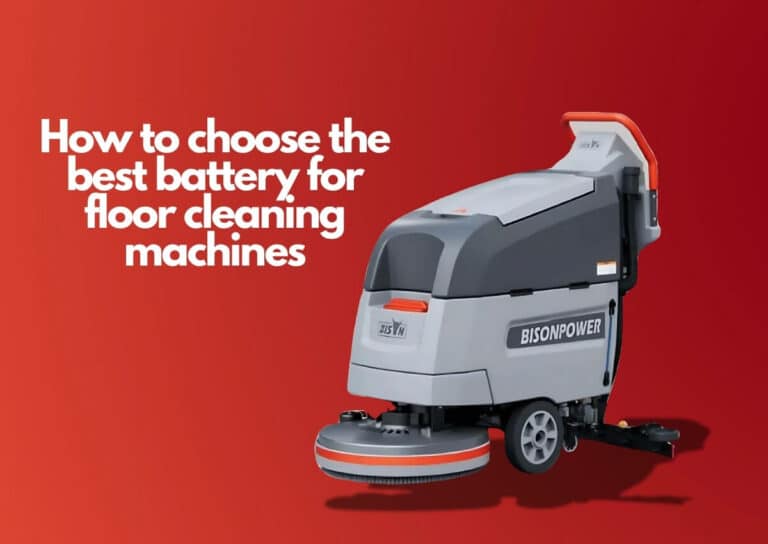
How to choose the best battery for floor cleaning machines
This blog aims to guide readers in choosing the best battery for their floor cleaning machines, ensuring optimal functionality and improved operational outcomes
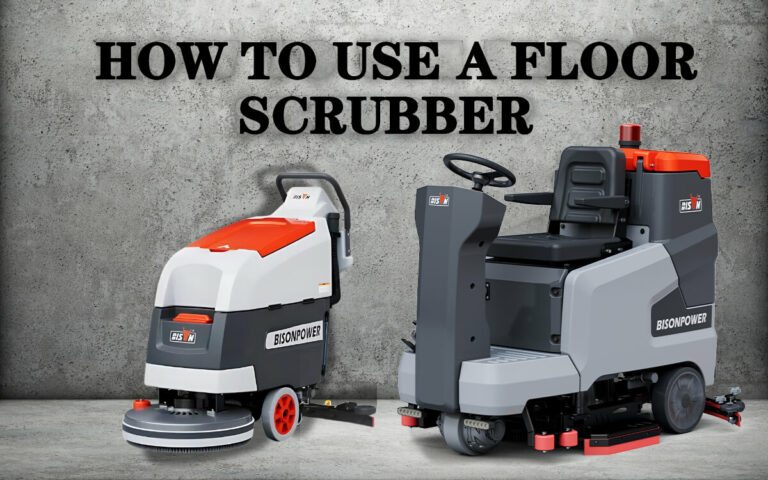
How to use a floor scrubber
In this comprehensive guide, BISON will walk you through everything you need to know about how to use a floor scrubber effectively
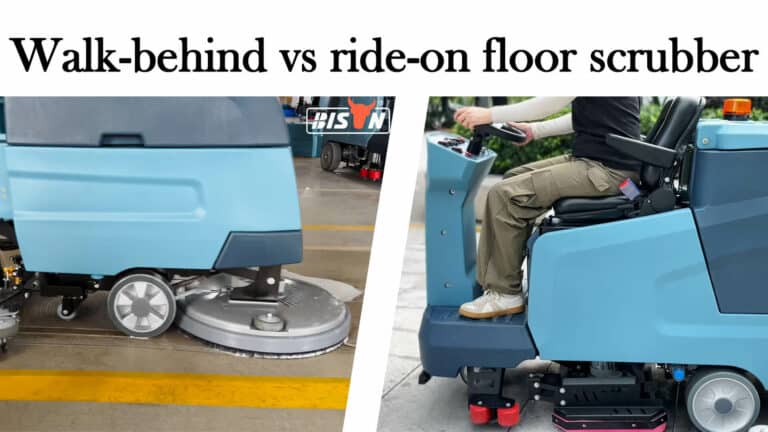
Walk-behind vs ride-on floor scrubber
This blog will compare walk-behind and ride-on floor scrubbers from the aspects of Performance factors, operating considerations, Cost analysis, etc.
